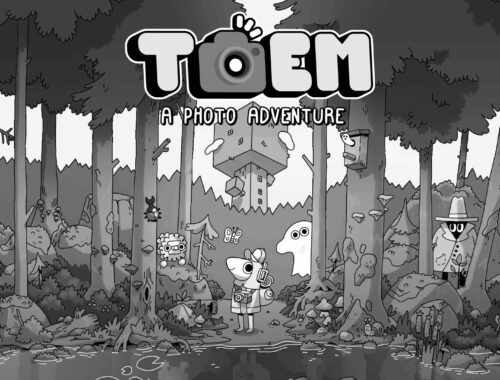Total War: Three Kingdoms Review
Title: Total War: Three Kingdoms
Developer: Creative Assembly
Publisher: Sega
Website: https://www.totalwar.com/games/three-kingdoms/
Genre: Tactics, strategy
Platform: Steam (Windows, Mac OS, Linux)
Audience: PEGI 16
Release Date: 23/05/2019
Price: £44.99 – Rapid Reviews UK was very kindly provided with a review code for this title.
I’m not much for tactics games, I dabbled in Warcraft 3 over a decade ago, but since then I never found myself engaged with games like Civilization or any of the Total War franchise. I let you know this so if you too are coming to Total War: Three Kingdoms without an iota of experience you can determine if this is a game for you. There is a lot to take in with the game, but will the tyranny of Dong Zhou bring you to your knees, or will you rise up to become Emperor of China? Read on in this (not-so) Rapid Review to find out.

Total War: Three Kingdoms takes Creative Assembly’s tried and true tactics game formula and pairs it with the overwhelmingly popular Romance of The Three Kingdoms story to great success. To start a campaign you can select from one of 12 factions, each with their unique powers. The recommended campaign for beginners is for Cao Cao, the Puppet Master. His unique ability is to drive factions to war against each other and to alter relationships either positively or negatively generally. Kong Rong, the Master Scholar, has an ability that focuses on trade to gain the upper-hand in diplomatic relations. Sun Jian, the Daredevil, can increase the rate at which he replenishes his troops and increases troop loyalty by repeatedly proving his bravery in battles.
Each faction has a unique starting position and set of objectives in their campaign, so you can experiment with each of the 12 and find the one that matches your play style. Personally, while I started (about 5 different campaigns) playing as Cao Cao, I eventually found myself playing as Sun Jian, who is much more focused on direct conflict and expanding his empire, while Cao Cao’s abilities have him much more suited for subterfuge, at least early on.
For those unfamiliar with Romance of the Three Kingdoms, it takes place at the turn of the third century China and is a romanticised version of the historical events that actually took place. The country is rebelling against Dong Zhou, and numerous factions are vying for control of the country. The Dynasty Warriors games are based on the same source material, in case some of these names sound familiar. And yes, Lu Bu is stupidly strong in this game as well.

Each faction’s campaign will start you at the same point of time, but in a different location with a different set of objectives. For example, early on, Cao Cao’s father is murdered by Tao Qian. At this point, the player can choose whether to “follow the story” and declare war on Tao Qian to avenge the murder, gaining you land and experience, or you can take a diplomatic approach and gain some resources through a peace deal.
How you handle those situations are going to determine what other factions think of you, which will be important when it comes to making alliances and other diplomatic relations. I wouldn’t say that I’m now well versed in the Three Kingdoms story after playing, as you only get a short text box that summarises most of the events that take place through the story. However, there are a few cutscenes that play out at critical moments in the campaign to increase the dramatic tension.
It’s not just other factions that you need to be maintaining relationships with. As you build and expand your kingdom, you’ll have a lot to keep track of — the main ones being food, gold, and public order. Obviously, gold is used to upgrade your settlements and build your armies. Each turn you’ll receive a payout that is the result of commerce, taxes, and industry in your kingdom. Certain buildings will increase your income, but all buildings and armies require an upkeep cost each turn to maintain them. So, if you buy all the best units that your gold can buy early on, you may not find yourself with enough gold each turn to upgrade your cities. Next is food; the larger your cities get, the greater the population, the more food you need. Your armies also need food to maintain their stamina and keep replenished so they can go into battle at full strength. To generate food, you’ll need to take over farmlands or rice paddies.
Last was the most difficult to manage for me, public order. Did you know people don’t like to pay taxes? Certain buildings, like a tax collection office, will reduce public order and make people upset with you. If there is enough negative sentiment in a region, a sect of the Yellow Turban Rebellion will sprout up in that territory and attempt to take over the city if not dealt with. You can overcome this negative sentiment by building things like Confucian Temples, which help restore public order each turn.
It’s a little overwhelming at first, but the game has a wonderful built-in guide which will pop up to inform you of new mechanics and how to utilize them. But learning and teaching myself to plan and manage these resources is why I restarted campaigns so often. They don’t draw your attention to many of these things I just listed above, and leave you to figure out the actual mechanics.
The Total War YouTube channel has some great videos to help introduce you to the game, but you’ll probably need to do some trial and error to feel comfortable. You can also demolish and reconstruct your cities if you find that you’ve made a mistake, but sometimes a blank slate is easier.

Now, let’s get to the war part of Total War. In your faction, you will recruit generals, up to three in an army, with an increasing number of available armies as you play. Each general then has up to six retinues of troops that benefit from being near them. The generals fall into a few classes, like a sentinel, strategist, and commander, among others. Each of those classes is going to influence what units should be in that general’s retinues. Strategists prefer to hang back and not engage in melee combat and are best grouped with ranged infantry. Other’s prefer melee infantry, while others work best with cavalry.
Each general also has a series of abilities that make them a formidable enemy on the battlefield. A single general can often stand against an entire entourage of troops on their own. They have special abilities, much like you might see in a Dynasty Warriors game. Creating balanced armies will be important to the success of your mission of conquering China.
Once you have an army, it’s time to march across the beautifully rendered map of China to your neighbour and kindly ask for them to hand over their territory to you. When that doesn’t work, it’s time for war. At the start of a battle, you are given an area in which you can position your generals and their retinues into a formation of your choosing. Often, setting my cavalry off to one side so they start in as near a flanking position as I could manage was my preferred setup. Of course, this largely depends on the battle you are fighting.
The game will crunch numbers before each battle and give you a prediction of whether or not you will win the fight. If the game predicts a victory, you can choose to delegate the fight to the AI, and it will be executed instantly, and your general will slay the opposing general in a short battle on the map in front of you. It saves you a great deal of time, especially later on as the armies grow in size. But early on I recommend you use those battles to hone your skills, commanding your army because you can turn the tides of a battle that’s predicted as a loss for you if you take manual control.
Just because an enemy’s army is larger than yours does not mean all hope is lost. There are numerous ways that you can gain the advantage on your opponent. One of them being engaging enemy generals in duels with your own. Once you engage a duel, the two generals will find each other on the battlefield and begin one on one combat with each other. As they battle, troops from both sides of the conflict will begin to gather around in awe as these two mighty warriors clash. When one of the Generals is killed or flees the duel, their retinues will become demoralised and will then begin to flee the battle.
You still need to plan how you will engage with the enemies beyond just rushing your generals in, but vanquishing their general’s is a sure-fire way to overcome the odds and turn a close defeat into a win. Zooming in the camera to witness these fights up close is awe-inspiring, especially as their troops do battle around them and the body count rises.

The visuals in the game are quite stunning. The map of China that you play across is scattered with hills, valleys, rivers, and forests. Not only do they create a map that feels authentic, but they also create tactical advantages. It takes more time to run through a forest than it does to run along a road so that you can use that to your benefit. But back to the art. The colour pallet is pleasant and soothing, especially as the map changes between seasons each turn. Snow coats the ground in winter and is replaced by wonderful greenery in the spring. The character portraits are also distinct where it matters and consistent enough to make it easy to interpret what you are looking at if you forget a name.
The cutscenes are very stylised, done in an ink wash painting, motion graphic style. But again, they are few and far between. It would have been nice to see them create more of the cutscenes for the “follow the story” prompts. The music provides a lovely ambience to the game, though nothing that I would be able to pick out. The orchestral arrangements feel appropriate to the situations but are somewhat sparse — pleasant background to your conquest. Though, if you’re like me, you’ll be playing a podcast alongside as you plan your next move.
There are also plenty of ways to alter your experience with the game. You can play a more realistic campaign with generals that have strengths similar to regular units in “Records” mode. There is a multiplayer campaign where you play with another person. This can be played either as a co-operative campaign, or you can play your factions separately and see who takes the throne. There is also the recent addition of the Dynasty Mode. Much like Dynasty Warriors, this pits your generals against large swaths of enemies as they attempt to overrun you. In this mode, you choose any three of the main generals and take them into battle. They have special moves like rings of fire, and volleys of arrows that can take down whole retinues of enemies at once.
There are also two DLC packs; The Yellow Turban Rebellion Pack, which adds three new playable warlords to the campaign and the Eight Princes pack which gives a new campaign set 100 years after the primary campaign with, you guessed it, eight playable Princes, with their own unique abilities. The game also has Steam Workshop support with a wide variety of mods that range from aesthetic changes to stat changes. There are plenty of ways to customize the way you play this game.

Total War: Three Kingdoms is a slow burn, especially if you aren’t used to tactics games. It was around the 23rd hour that I felt that I had begun to put together all the pieces, and close to another 10 hours before I had completed my first campaign and had become Emperor. Because not everyone was happy with me when I took the throne, I was left with a somewhat unruly northwestern quadrant that was none too pleased with the Sun dynasty on the throne, so I will continue to battle until I have conquered the rest of the country and the country can once again know peace. For tactics gamers, especially those familiar with the Total War series, this is an easy recommendation. If you’re new to the genre, I’d say that it is worth checking out, as you may just become a fan of a new genre. Just be willing to put the time in and understand that things will be slow.
Rapid Reviews Rating

Buy on Steam:
https://store.steampowered.com/app/779340/Total_War_THREE_KINGDOMS/
Buy on Humble Bundle:
https://www.humblebundle.com/store/total-war-three-kingdoms?hmb_source=search_bar





